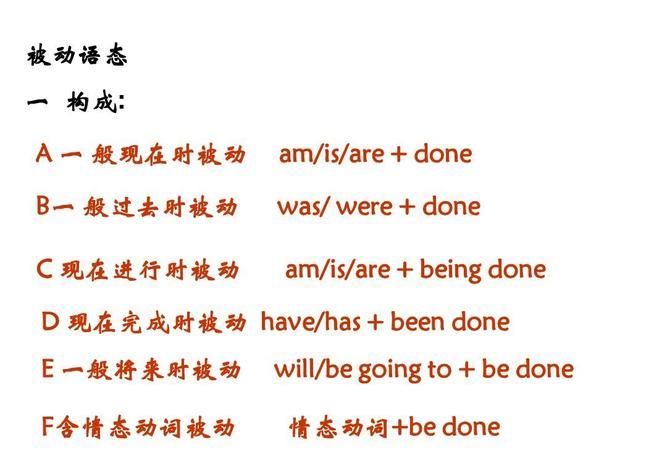英语中的被动语态是主语接受动作,需要将主语和宾语位置互换,并在动词前加上助动词"be"。各种时态的被动语态构成方式包括:一般现在时(am/is/are + 过去分词),一般过去时(was/were + 过去分词),现在进行时(am/is/are + being + 过去分词),过去进行时(was/were + being + 过去分词),一般将来时(will be + 过去分词)。

一般现在时被动语态
一般现在时被动语态的构成为:am/is/are + 过去分词。例如:
- 主动语态:I drink water.
- 被动语态:Water is drunk by me.
一般过去时被动语态
一般过去时被动语态的构成为:was/were + 过去分词。例如:
- 主动语态:He played football.
- 被动语态:Football was played by him.
现在进行时被动语态
现在进行时被动语态的构成为:am/is/are + being + 过去分词。例如:
- 主动语态:She is cooking dinner.
- 被动语态:Dinner is being cooked by her.
过去进行时被动语态
过去进行时被动语态的构成为:was/were + being + 过去分词。例如:
- 主动语态:They were painting the wall.
- 被动语态:The wall was being painted by them.
一般将来时被动语态
一般将来时被动语态的构成为:will be + 过去分词。例如:
- 主动语态:We will finish the project.
- 被动语态:The project will be finished by us.
